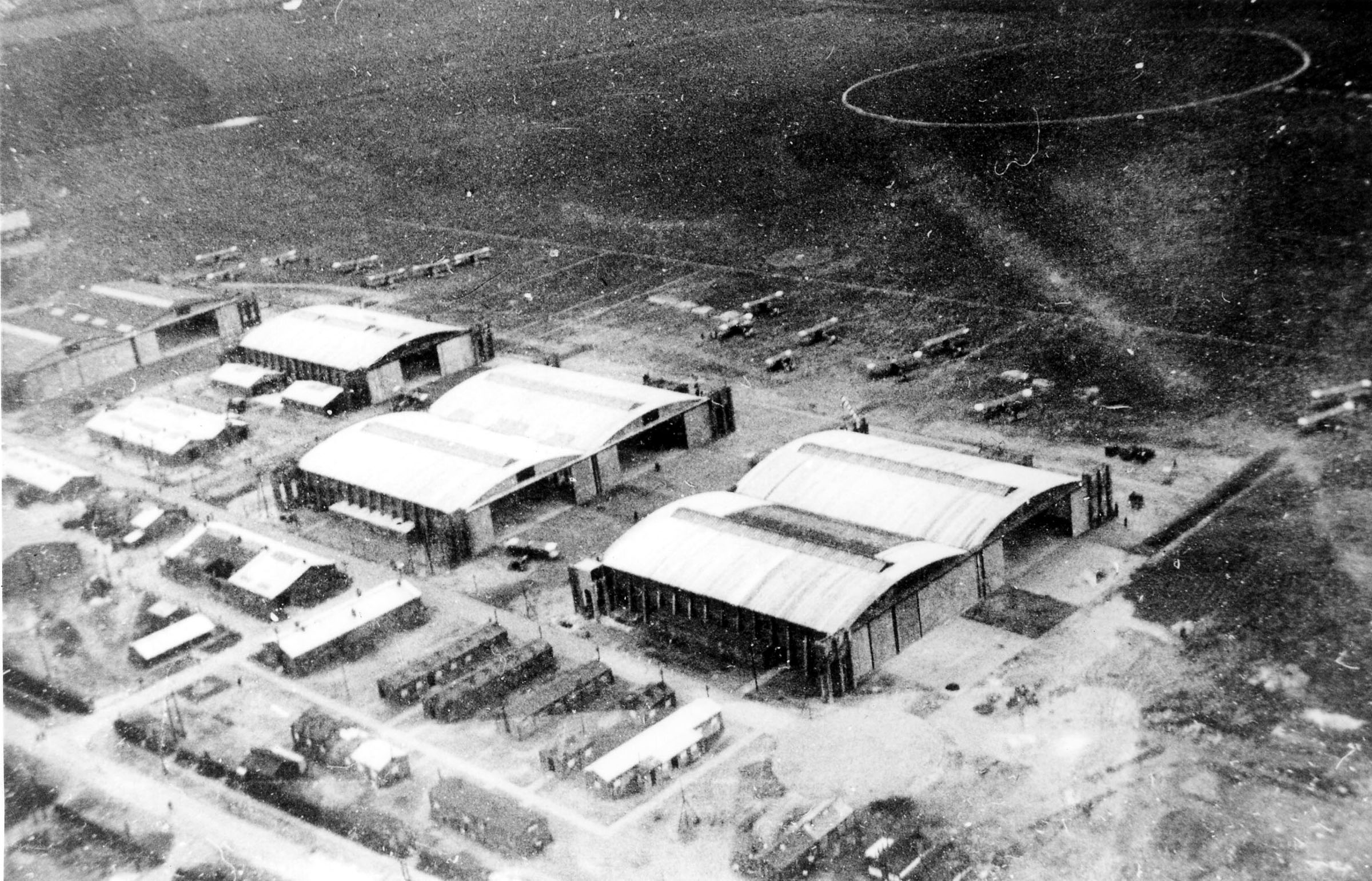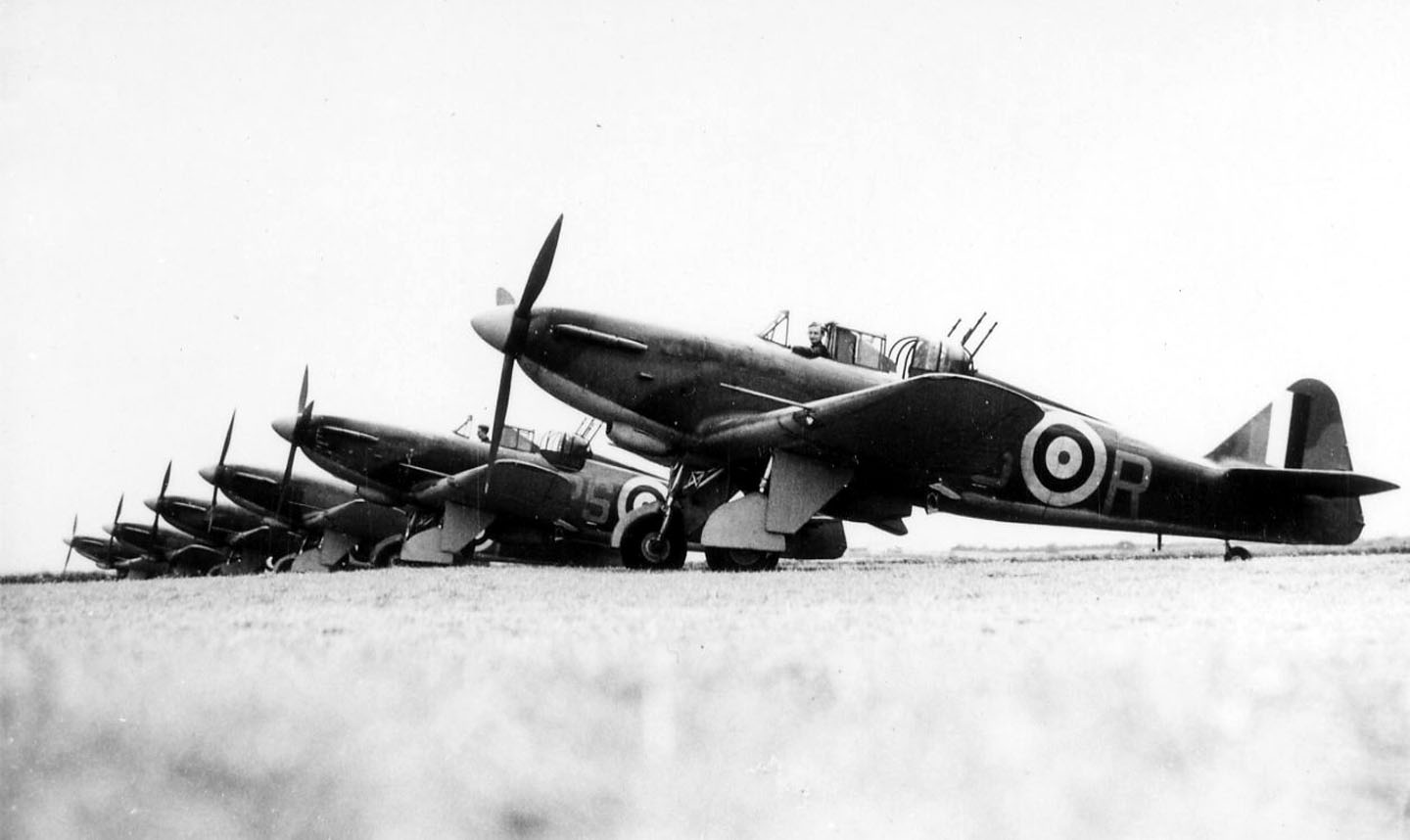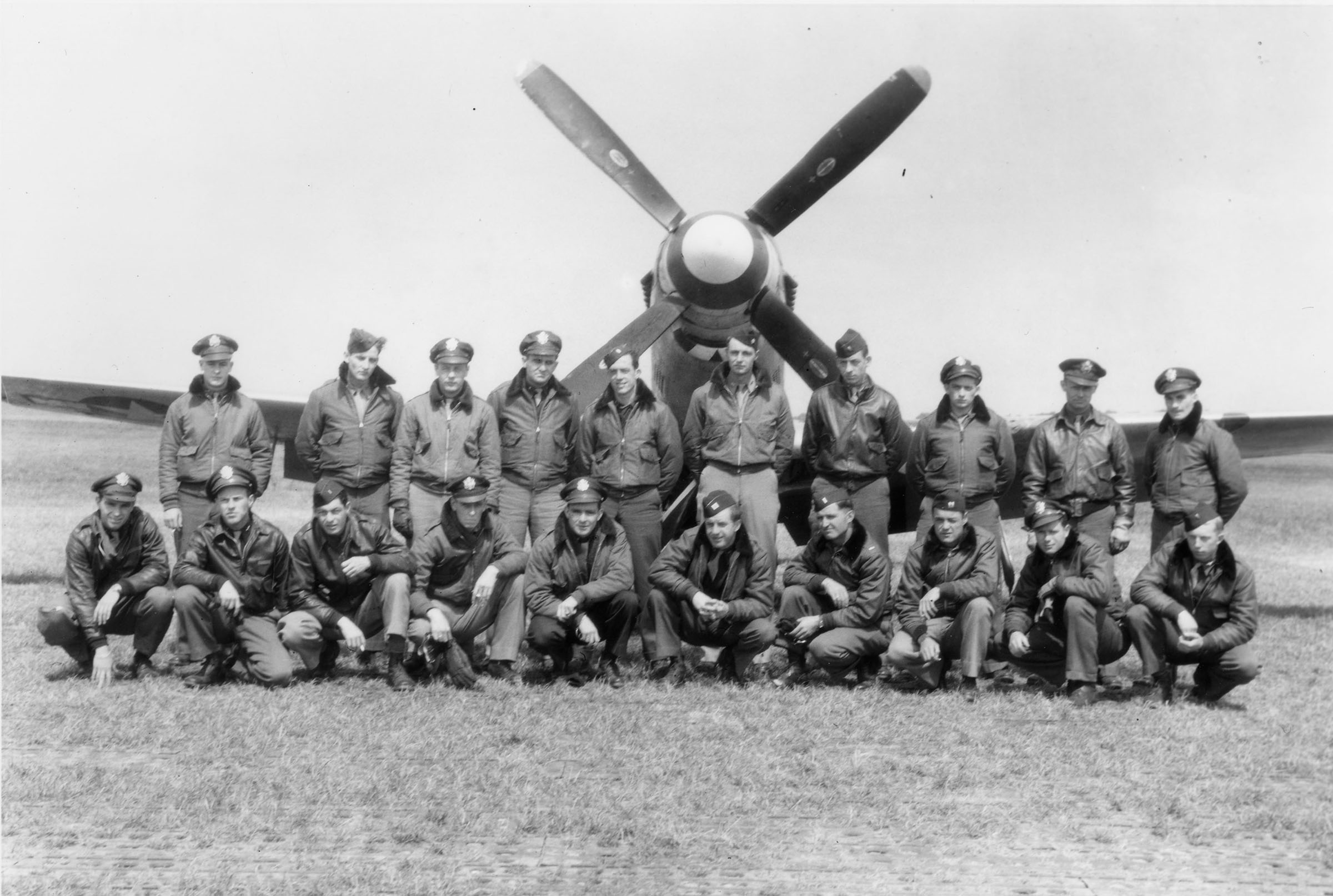Museum & history
Get to know the airfield's rich history or even visit a museum
Open once a month
339th Fighter Group
Led by experts
A brief history
By Vic Flintham
The first world war
There have been three airfields at Fowlmere. The first one was built on an even older landing ground on the east of the B1368 Flint Cross to Fowlmere road. It was a very large permanent aerodrome with three double and one single Belfast Truss hangars, similar to those at Duxford, and a very large domestic site on the opposite side of the road. The new aerodrome was opened early in 1918 as Number 31 Training Depot Station for the newly independent Royal Air Force. Training squadrons were to be based here but the first unit was No 165 US Aero Squadron on 15 March 1918. The first RAF units were numbers 124, 125 and 126 squadrons with D.H.4 and D.H.9 bombers which transferred from Old Sarum from 1 March 1918, all to be disbanded on 17 August well before the war’s end. They were used to train bomber crews.
After the armistice the need for aerodromes diminished and Fowlmere was selected for closure, Duxford having better road and rail links. Giant Handley Page 0/400 bombers were stored here for a time, but the aerodrome was closed in 1922 and all buildings and hardstandings demolished in 1923. There is now no sign of the original WWI aerodrome despite its size.

Battle of Britain
In Spring 1940 a satellite landing ground for Duxford was prepared around Manor Farm this time on the west of the B1368 looking north. This second incarnation designated Fowlmere simply as airfield G1 and later WA1. From 1 July Spitfires of 19 Sqn RAF were detached here with crews using tented accommodation plus several Nissen huts throughout the Battle of Britain period. These Spitfires were remarkable for including some of the first cannon-armed models; constant blockages restricted their use in the Battle, though. One newly-trained member of 19 Sqn to visit Fowlmere was ‘Johnnie’ Johnson, later to become the RAF’s top-scoring ace. Defiant fighters of 264 Sqn and Hurricanes of the Czech 310 Sqn were also based here briefly in July and the autumn respectively. Duxford’s detached fighters were active throughout the Battle, and especially on 31 August when the aerodrome was bombed, although most of the attackers’ bombs finished up along the nearby railway line. Duxford and Fowlmere were protected by 3” anti-aircraft artillery based at Thriplow as well as Bofors guns on the former airfield. After the Battle, Fowlmere ceased to be simply an overspill for Duxford and units were now based here directly. American units have long had an association with the airfield and this was typified by the basing of Hurricanes of 133 (Eagle) Sqn RAF, comprising US volunteers, for a few days in October 1941.
From now until the Spring of 1944 various RAF units were based at Fowlmere usually just for a few days before moving on. The exception was 154 Sqn with Spitfires which formed at the airfield on 17 November 1941 departing for Church Fenton in May 1942. Other, more short-term, attachments included 174 Sqn (Hurricane, July 1942), 111 Sqn (Spitfire, October 1942), 655 Sqn (Auster, February 1943), 411 Sqn (Spitfire, March 1943) and 2 Sqn (Mustang I, March and April 1943).
In June 1942 the dummy superstructure of HMS Kelly was built on the airfield as part of a film set. It was filmed being attacked by a Ju 88 of Duxford’s 1426 Enemy Aircraft Flight for incorporation in the propaganda film In Which we Serve.
With the 411 (Canadian) Sqn deployment, Fowlmere played a key part in the preparation for D-Day. Operation Spartan was a major exercise held between 1 and 12 March 1943. It involved British and Canadian forces and was conducted across southern and central England to test a wide range of procedures and tactics. The attackers, Z force, started in Southland (a notional bridgehead around Southampton) attacking X Force (German) in Eastland (just to the west and north of London) via neutral Westland (Salisbury Plain). Ten divisions were involved including four armoured. Each side was allocated a nineteen squadron air force, 411 Sqn being part of X force. From the experience gained the RAF 2nd Tactical Air Force was formed with composite groups and self-contained mobile wings based around one airfield.

The Americans
From April 1943 through the summer Fowlmere was brought to full all-weather operational status with a number of permanent buildings including seven blister hangars for local squadron line maintenance and one larger T2 hangar. (The latter remains, albeit having been re-clad with aluminium.) The original runways had been grass, but they were now laid in steel tracking with taxiways in pierced steel planking and concrete. The Barley-Fowlmere Road (B1368) was closed and one runway ran across it. The orientation of the runways was 050/230 020°/200° (main runway, 4,800ft) and 110/290 080°/260° (4,200ft), and the airfield was unusual in only having two runways instead of the more usual three.
Perimeter track was constructed in concrete and between the track and the now closed road were most of the eighty hardstandings for fighters. (A section of the perimeter track remains as the roadway from the B1368 to the ModernAir site for those approaching the airfield from the south.) Provision was made for accommodating 190 officers and 1,520 men and on completion of the work Fowlmere became US Station 378. From 4 April 1944 the P-51B Mustangs of the 339th Fighter Group (part of the 66th Fighter Wing of the 3rd Bomb Division of the 8th Air Force) moved in to what was formerly Station 378.
The Group comprised the 503rd, 504th and 505th Fighter Squadrons and their main task was bomber escort. The Americans soon nicknamed Fowlmere the ‘Hen Puddle’. The Group’s first operation was on 30 April 1944 when it conducted a sweep over northern France ahead of a daylight bomber raid. From D-Day, 6 June 1944, the P-51s also supported ground forces and attacked targets of opportunity in Normandy. The 264th and final mission flown by the Group was a freelance strafing mission on 21 April 1945 across to Stuttgart and Munich. The record says “All aircraft returned safely, but were forced to land at Bassingbourn due to heavy crosswinds”. We still get them!
During its brief sojourn in the UK the 339th Fighter Group established a fine record, destroying 653+ aircraft in the air and on the ground, 286 in April 1945 alone. The cost was high with 63 pilots killed on operations, 16 in accidents plus 29 who became prisoners of war. Seven evaded capture and returned home while the number of aircraft lost was 97.

A third aerodrome
Fowlmere was turned over to the RAF in September 1945 and shortly after that the Americans had returned to the United States. The airfield soon reverted to farmland, but was not formally relinquished by the RAF until 1957. The track had long been taken up but some of the buildings including the sole T2 hangar remained. The owner, Martin Sheldrick, sympathetic to aviation and sensitive to the airfield’s history, made provision for a short grass runway which was first used by ‘Doc’ Wallace in Rheims-Cessna 172E G-AWDR in 1988. The following year ModernAir moved in initially with Piper Arrow G-BONC and a taxiway connected the runway to the hangar area.
Over the years ModernAir has grown to comprise a superb fleet of Pipers and while there are several other residents, visitors are in the main those bringing aircraft to the excellent engineering facility. The present runway, to the south of, and differently aligned from, the main wartime runway, is one of the smoothest and best drained in the Country, sitting as it does on the eastern end of the Chilterns. The quality of the aerodrome, the friendliness of owners and users and its proximity to Duxford accounts for the one large influx each year when visitors from across the Continent flock Fowlmere for the Flying Legends air display.

Bibliography
- Bowyer, M J F Action Stations No 1 East Anglia Patrick Stephens, Cambridge, 1979
- Bowyer, M J F Action Stations Revisited No 1 Crécy, Manchester, 2000
- Francis, P British Military Airfield Architecture Patrick Stephens, Cambridge, 1996
- Freeman, R A Airfields of the Eighth Then and Now After the Battle, London,
- Harry, G P ed The 339th Fighter Group Turner Publishing, Kentucky, 1991
- Johnson, J E Wing Leader Chatto and Windus, London, 1956
- Ramsey, W G ed The Battle of Britain Then and Now Born in Battle, London, 1980
- Smith, D J Britain’s Military Airfields 1939-45 Patrick Stephens, Cambridge, 1989
- Smith, G Cambridgeshire Airfields in the Second World War Countryside Books, Newbury, 1997
Websites
- http://ourworld-top.cs.com/The339thftrgrp/
- http://www.littlefriends.co.uk/339thfg.jsp
- http://www.web-birds.com/
Vic Flintham
April 2004
